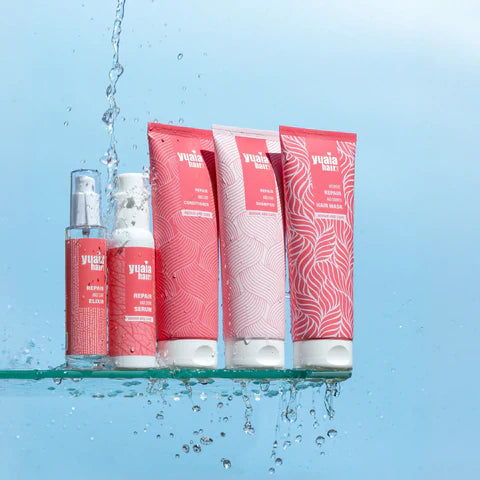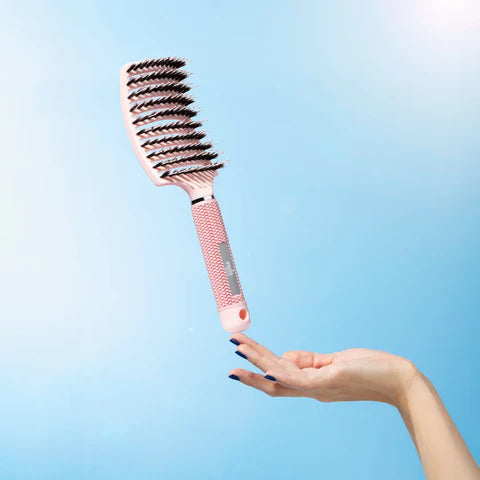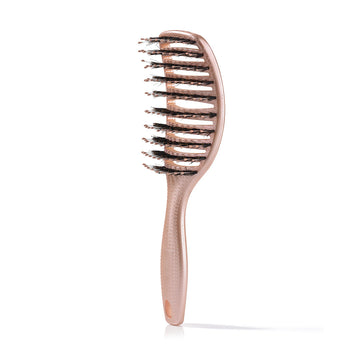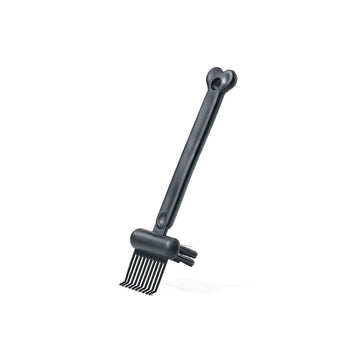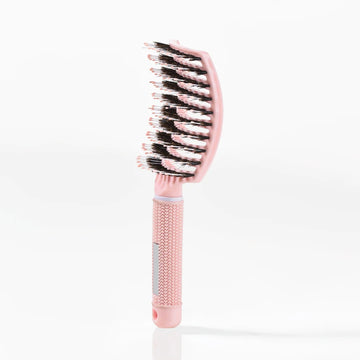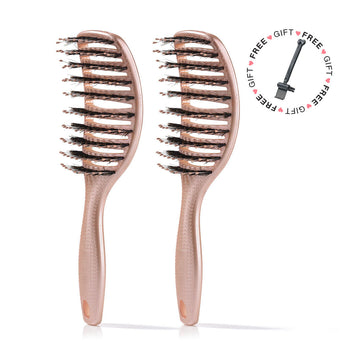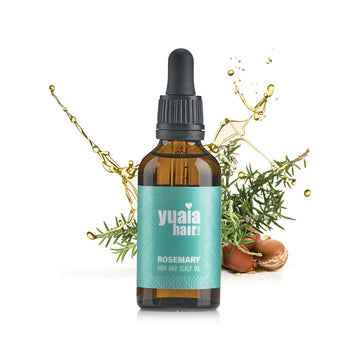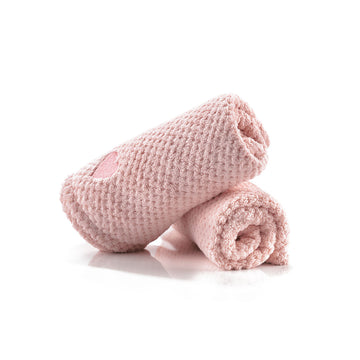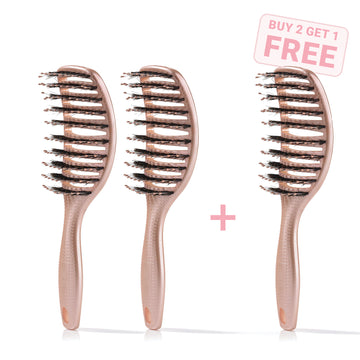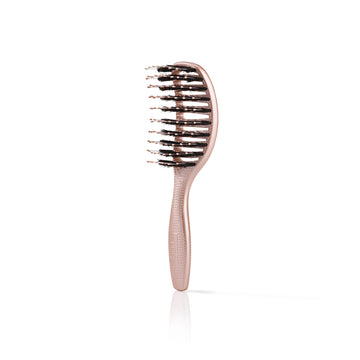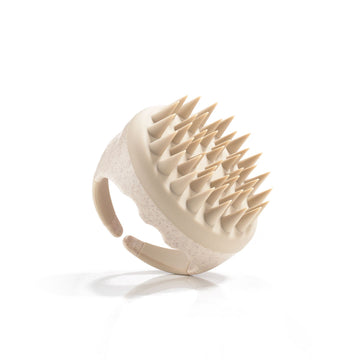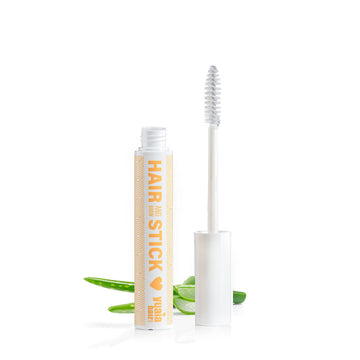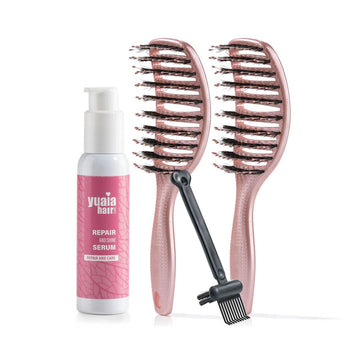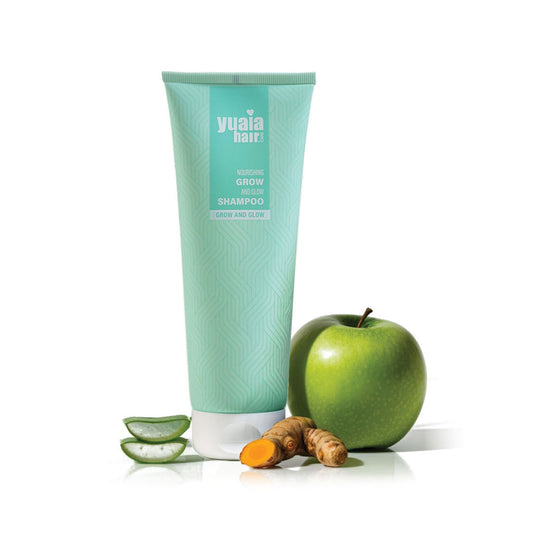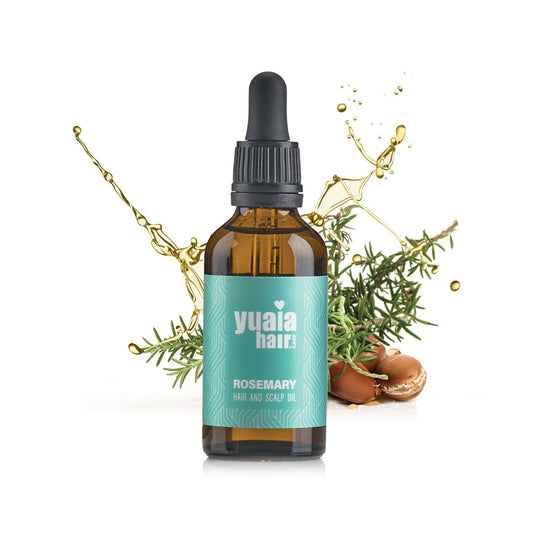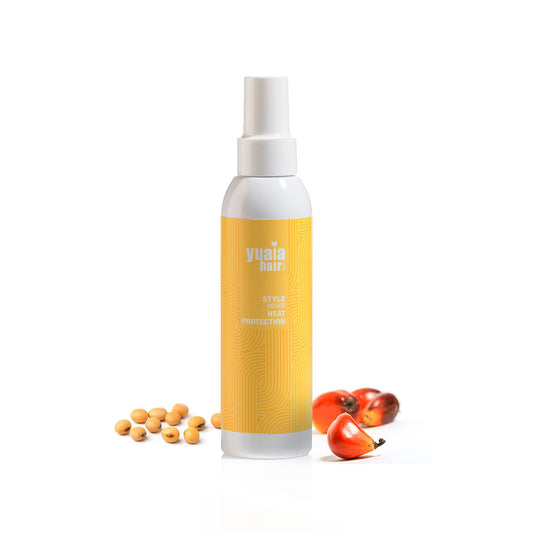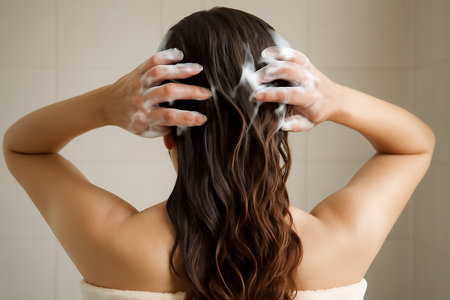
How to tell if your hair is fine, medium, or coarse: A simple guide

by Nanna Bundgaard | 01. October 2025 | Reading time: 5 minutes
Read more about the authorMany people find themselves puzzled when it comes to identifying their hair type. This uncertainty often leads to using the wrong hair care products and styling techniques, resulting in less-than-ideal hair health and appearance. Understanding whether your hair is fine, medium, or coarse is important for tailoring your hair care routine to meet your specific needs.
Hair texture is primarily determined by the diameter and structure of individual hair strands. These factors influence how your hair behaves, responds to products, and even how it looks. Knowing your hair type can help you choose the right products and methods to maintain healthy, beautiful hair.
What is fine hair?
Fine hair is characterized by its thin diameter, typically less than 50 microns. It often feels soft and delicate, and a single strand can be difficult to feel between your fingers. This hair type tends to become oily quickly and can be easily weighed down by heavy products.
Structurally, fine hair usually consists of two layers: the cortex and the cuticle. Because of its fragility, fine hair benefits from lightweight products that won't overwhelm its delicate strands. It's important to avoid heavy conditioners and opt for gentle, sulfate-free shampoos. For those dealing with fine hair issues, our Grow and Glow Shampoo is an excellent choice.
Understanding medium hair
Medium hair is often recognized as the most common hair type, with a diameter ranging between 60-80 microns. It strikes a balance between the fine and coarse categories, offering a smooth feel and visible fullness without being too thick or thin. This versatility makes medium hair particularly adaptable to various styling techniques and products.
Structurally, medium hair may contain a third layer known as the medulla, which contributes to its robustness and flexibility. This additional layer provides a slight edge in durability compared to fine hair, making it less prone to breakage. As such, medium hair can handle a wider range of products and styling methods without compromising its health.
When caring for medium hair, it's crucial to maintain a balanced approach. Overloading it with heavy products can lead to unwanted build-up, while using overly light formulations might not provide enough nourishment. Opt for products that offer a harmonious blend of moisture and strength to keep your hair looking and feeling its best.
Characteristics of coarse hair
Coarse hair stands out for its thick diameter, typically greater than 80 microns, and its distinctive wiry texture. This type of hair is easily felt between fingers and is known for its fullness and strength. With three visible layers—the cortex, cuticle, and medulla—coarse hair is the most robust of the three types, offering significant resistance to heat and styling.
However, the strength of coarse hair comes with its own set of challenges. It is often less elastic, making it more susceptible to frizz, particularly in humid conditions. Coarse hair also tends to take longer to dry and may require more intensive moisture-rich products to maintain smoothness and manageability.
For those with coarse hair, incorporating moisture-rich, strength-building products into your routine is essential. These products help to manage frizz and dryness, ensuring that your hair remains healthy and vibrant. Our rosemary hair oil is an excellent choice for adding moisture and enhancing shine, providing the nourishment coarse hair needs to thrive.
Common testing methods to determine hair type
Determining whether your hair is fine, medium, or coarse can be achieved through simple at-home tests. The thread method involves comparing a piece of your hair to a standard sewing thread. If your hair is thinner than the thread, it is likely fine; if it's about the same thickness, it's medium; and if it's thicker, your hair is coarse.
Another approach is the visual and touch test. Examine your hair to see if it appears wispy and is hard to spot, indicating fine hair. If your hair is more noticeable and feels smooth, it is likely medium. Thick and rigid hair suggests a coarse texture. These methods provide a straightforward way to identify your hair type and tailor your care routine accordingly.
Get a 10% discount code sent to you
Receive the best tips and tricks for your hair from Lotte and Nanna 🥰
How hair thickness affects styling
Understanding how your hair's thickness impacts styling can help you make more informed choices about products and techniques. Each hair type—fine, medium, or coarse—has its own unique styling considerations.
For fine hair, achieving volume can be a challenge. Using lightweight styling products is essential to avoid weighing down the hair. Opt for volumizing sprays and mousses that provide lift without adding extra weight.
Medium hair offers a balance that makes it versatile for many styles. It holds curls well and can be straightened with ease. The key is to use products that maintain this balance, providing enough moisture without causing build-up.
Coarse hair is robust and can withstand more intense styling, but it often requires additional moisture to prevent frizz. Using a heat protectant, such as our Style and Shine Heat Protection, can help maintain the health of your hair while styling. Additionally, incorporating moisture-rich products can enhance the hair's natural shine and reduce frizz.
Frequently asked questions
What are the signs of each hair type?
Fine hair is typically less than 50 microns in diameter, feels soft and delicate, and can become oily quickly. Medium hair ranges from 60-80 microns, feels smooth, and is the most common texture. Coarse hair is greater than 80 microns, feels wiry, and appears fuller.
How can I adjust my hair care routine based on my hair type?
For fine hair, use lightweight products and avoid heavy conditioners. Medium hair benefits from balanced products that provide moisture and strength. Coarse hair requires moisture-rich, strength-building products to manage frizz and dryness.
Why is it important to know my hair type?
Understanding your hair type helps you choose the right products and styling techniques, which can lead to better hair health and more effective styling outcomes.
Get a 10% discount code sent to you
Receive the best tips and tricks for your hair from Lotte and Nanna 🥰
 2-5 day delivery
2-5 day delivery
 25.000+ satisfied customers
25.000+ satisfied customers
 Satisfaction Guarantee
Satisfaction Guarantee



